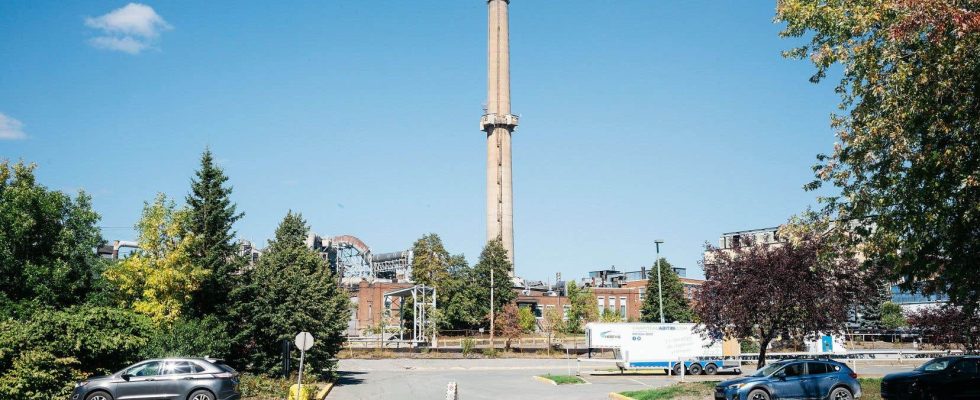The issue of the Horne smelter, in Rouyn-Noranda, once again takes a political turn after Radio-Canada revealed that the Glencore board of directors was to meet soon to decide on the future of the smelter, while the Estimated cost of reducing arsenic emissions would have increased by 50%.
The Minister of the Environment recalled, Tuesday morning, that Glencore has obligations to respect and that it must achieve the various pollutant emissions targets if it wants to continue operating its smelter in Rouyn-Noranda.
Benoit Charette was reacting to information according to which Glencore would consider closing the Horne smelter if investments to achieve air quality targets are too high.
“It is not a question of investment, it is a question of results” and “these investments are needed to achieve them”, indicated the minister.
When referring to the “results”, the minister was referring to the arsenic emission target of 15 nanograms per cubic meter of air (ng / m3), a threshold that the company must reach in 2027 and which was established by the Quebec public health authorities as well as the Ministry of the Environment.
In order to reach this threshold, Glencore presented a $500 million plan in the summer of 2022.
However, according to Radio-Canada, the estimated investments would have increased by 50%, which would force the owners of the company to consider closing the foundry.
The closure of the smelter would be “major”, indicated the CAQ MP for Abitibi-Est, Pierre Dufour, referring to the job losses and the consequences on other companies, such as the CCR refinery, located in Montreal- East, which give a second life to metals, such as copper, recycled by Glencore.
However, he called for caution regarding the information published on Tuesday. “We have to be careful, you know, there are negotiation games in there, possibly,” pointed out the MP.
The opposition attacks the CAQ
“I hope that the CAQ will not give in to these threats and will not kowtow even more,” said Émilise Lessard-Therrien, co-spokesperson for Québec solidaire.
Former Member of Parliament for Rouyn-Noranda–Témiscamingue, Mme Lessard-Therrien stressed that “no one wants the company to close” and that “what we want is for it to respect the standards like elsewhere in the world”.
She also noted in a press release that “the federal government and the Quebec government have extended millions of dollars to support Glencore in the modernization of the smelter” and that “the multinational has room” to do so.
PQ MP Joël Arseneau also referred to the profits of the multinational. “Glencore distributed $7.1 billion in dividends to its shareholders in 2023. The CAQ cannot give in to the blackmail of foreign multinationals on the back of the health of Quebecers,” he wrote on X (ex -Twitter).
For his part, Liberal MP Frédéric Beauchemin indicated on social networks that the “incompetence” of the Coalition Avenir Québec (CAQ) “also affects the development of all of Quebec.”
“What will the CAQ do to supply the supply chain with rare minerals that only the Horne Foundry supplies to Quebec? What is the contingency plan? » asked the Liberal MP.
A strategy, according to Mothers at the Front
The group Mères au front de Rouyn-Noranda, which has long campaigned for the foundry to respect pollutant emission standards, suggested that the “threat of closing the factory” would be “a strategy which celebrates its 100e birthday”.
In a Facebook post, the group published a copy of an article believed to have been published in 1924 by the Gazette du Nord. In this article, the leaders of the Rouyn-Noranda foundry indicate “that they would indefinitely suspend the operation of their mines” if the government forced them to “place their furnaces elsewhere than on their property”.
For his part, Thierry Larivière, communications advisor for the Confédération des syndicats nationaux (CSN), which represents the foundry workers, indicated Tuesday morning that he was waiting to obtain more information on the situation before reacting.
Target of 15 ng/m3 for 2027
An agreement with Quebec, which was signed with the Liberal government in 2017, allowed arsenic emissions from the smelter to reach an annual average of 100 ng/m3or 33 times more than the norm.
In July 2022, a report from the National Institute of Public Health of Quebec (INSPQ) revealed that, over a period of 70 years, an excess number of citizens of Rouyn-Noranda, between one and 14, would develop cancer if the Glencore company did not reduce the concentration of arsenic in the air produced by the smelter.
In March 2023, the government required the Horne smelter to put in place a plan that would allow it to meet the 15 ng/m target.3 of arsenic from 2027, which would be, if the smelter meets the target, five times higher than the environmental standard, which is 3 ng / m3.
Last spring, the government also required the company to present an action plan by 2027 to eventually reach the 3 ng/m standard.3.
